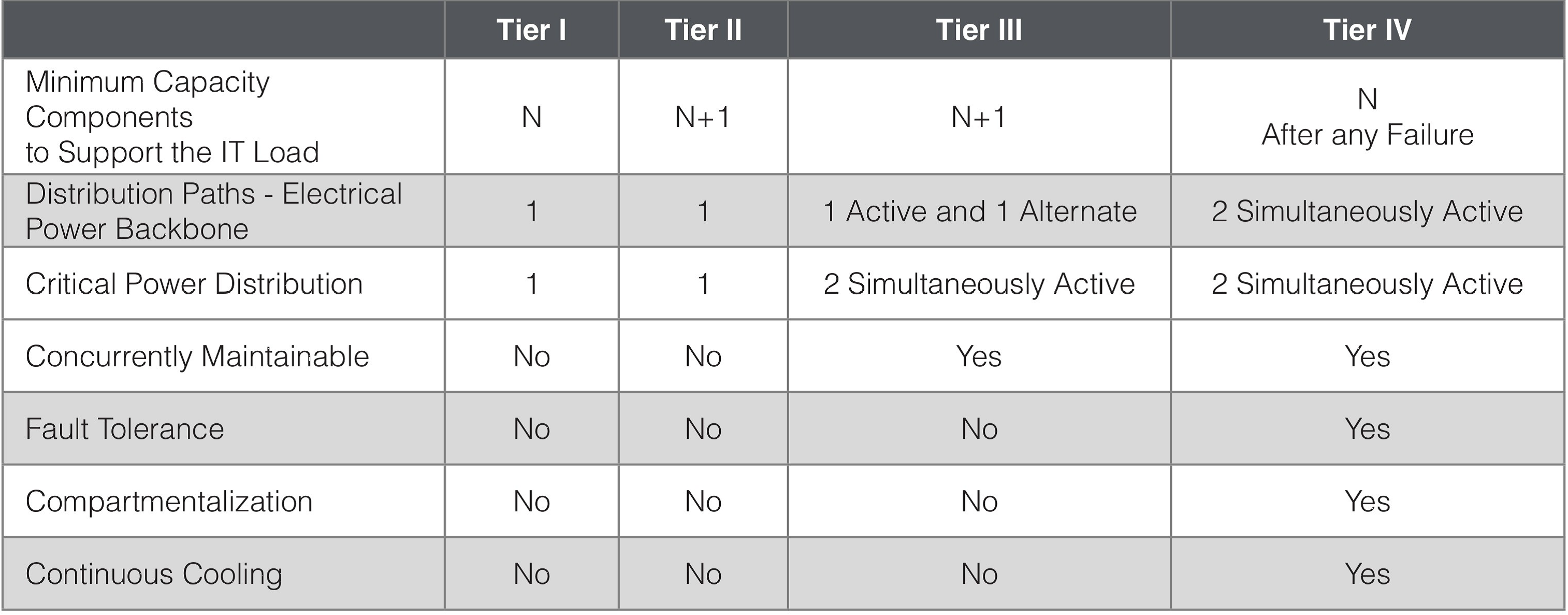Tier III vs. Tier IV Data Centers: Is The Latter Worth The Premium Investment? Choosing between a Tier III and a Tier IV Data Center can be confusing for enterprises seeking Colocation providers.
Data Centers have been known to use specific terminologies and certifications that represent important aspects of uptime, like data redundancy. The Tier Classification System developed by the Uptime Institute is similar. It accounts for how Data Centers react to disruptions, including planned and unplanned maintenance schedules. While the discussion does boil down to SLAs and system availability, the Uptime Institute places each Data Center in a specific Tier depending upon how they perform over and above the base expectation known as “N.”
Understanding Data Center Redundancy (The “N” factor)
The symbol “N” stands for the infrastructure needed to operate a Data Center at a full load. A Data Center working at the N capacity is designed to be used without any redundancies, i.e., there is no place to accommodate any system failure or maintenance. This is obviously less than ideal for any enterprise hoping for a decent uptime on their servers. Hence, there are incremental options.
N+1
A facility capable of running a full IT load with an additional component to mitigate downtime falls under the N+1 category. As per the redundancy standards, a Data Center provider with N+1 configuration shall have an extra unit for N capacity of units needed to run the systems.
2N
A 2N configuration is a completely redundant, independent, and mirrored Data Center that can take over the operational tasks of the main system without any downtime. Such facilities offer fault tolerance and more than enough infrastructure to cover any maintenance.
2N+1
Working as a parallel backup system with an additional component that offers a complete shift to the backup system while creating a crutch for further failures is how a 2N+1 configuration can be defined. These are practically ready for all mishaps, outages, maintenance, and failures.
Where do Tier III and Tier IV stand as per the “N” system?
The Uptime Institute classifies Data Center Tiers as follows:

A Tier IV facility is the pinnacle offering of any Data Center with a fully fault-tolerant IT infrastructure that can be summed as 2N. It assumes the responsibility of any system failure with a second backup ready to take on the role of the main system. But, Tier IV also comes at a very high cost of implementation. The construction and maintenance call for extensive outlays, leaving only a few multi-tenant operators to house such facilities.
In contrast, the Tier III Data Centers can be defined as “concurrently maintainable” structures, housing N+1 capacities that allow temporary disabling of some systems. Considering long-term financial and operational sustainability, Tier III is the most widely adopted standard across the industry. Apart from the redundancy, it also brings in an improved resiliency with redundant distribution paths that account for an uninterruptable connection from the utility service to the server rack.
Which Tier of Data Center is Right for Your Business?
Choosing the right Tier of Data Center for your enterprise is a difficult decision, to say the least. While it is certainly tempting to go for the highest standard in the market, not every industry requires overbearing uptime and availability numbers. The N+1 redundancy (Tier III) works as a good baseline offering high reliability and manageable Colocation costs for most enterprises.
On the other hand, a complete 2N infrastructure is more often than not extremely expensive to install and maintain. Organisations can end up paying for many capacities that they wouldn’t even utilise at all.
In reality, the Data Center industry recognises a hybrid category between the Tier III and Tier IV specifications. These house Tier III (N+1) systems with some Tier IV (2N) elements. The additional components typically focus on redundant utility power sources, electrical delivery systems, and generators.
That being said, redundancy is only the starting point for evaluating the specific capabilities of a Data Center provider.
Going Beyond Tiers
When discussing the scope of Tier Standards, some factors inevitably fall out of consideration. The design, deployment, and operations of a Data Center facility are equally attributable to the overall uptime that is promised by the Data Center provider.
Below are some aspects that must be looked at before entering into an SLA-based agreement with a Data Center provider:
- Safety protocols, environmental concerns, and personnel management are not addressed in the Tiers defined by the Uptime Institute. Any failure to address these in advance can create a systematic risk for the organisation.
- Critical components are at a higher risk of disruption during the maintenance of redundant systems. Understanding how the Data Center provider deals with an event failure in such cases secures the core activities in the long run.
- The placement and response to the fire alarm, fire suppression or the emergency power off (EPO) must be considered in all instances.
- All the IT equipment should be dually corded for higher availability. Transfer Switches must be deployed for single corded equipment, securing the connection path across the spectrum for cohesive protection.
Choosing The Right Data Center Partner
A recurring question that often crosses the table is, “Why aren’t all Data Centers Tier IV?” The answer is quite simple. While a fully redundant Tier IV facility can be developed at an increased cost, it doesn’t justify the investment for most enterprises.
A Tier III Data Center provides a more than required level of uptime, leaving no space for unprecedented outages or maintenance. Plus, considering the evolving IT landscape of our country, the tangible and intangible outlays of a Tier IV Data Center don’t merit a switch from a high-capacity Tier III Data Center.
As India’s leading Tier III Data Center provider with over a decade’s experience of working with 850+ leading organisations spread across the country, Web Werks’s rich ecosystem comprises of a dense fabric of local, regional, national, and global Tier-1 carriers, 180+ Internet Service Providers (ISPs), major Content Delivery Networks (CDNs), and global Cloud Service Providers (CSPs) like AWS, Azure, and Google.
Our highly experienced support team is often based in the same premises of our Data Centers to ensure that every issue, no matter how big or small, is resolved at the earliest with the least amount of disruption for our clients. Furthermore, our recent joint venture with Iron Mountain Data Centers (IMDC) gives our clients an additional edge of harnessing a global knowledge pool and local experience, and instant access to state-of-the-art Data Centers spread across India, United States, Europe, and the rest of APAC.
To learn how Web Werks can redefine your Data Center migration strategy, please visit https://www.webwerks.in or get in touch with us on +91 8828335555.

